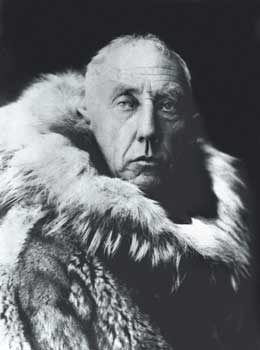WITH THE 100TH anniversary of Roald Amundsen’s Antarctic expedition soon upon us (he tagged the South Pole on December 14, 1911—34 days before Robert Falcon Scott), there will be no shortage of remembrances this fall. Lynne Cox’s is the one not to miss. Cox, the world’s greatest open-water swimmer and the author of Swimming to Antarctica, ruminates on Amundsen and follows his path in South with the Sun: Roald Amundsen, His Polar Explorations, and the Quest for Discovery (Knopf, $26). The new biography traces the life story of the great polar explorer and examines why he succeeded where so many others failed. (Scott died of cold and starvation on his return journey.) Cox’s answers: preparation and help from his friends. It’s fascinating to read about the Norwegian hardman through the eyes of Cox, who is credited with the first swims across the Strait of Magellan, the Cape of Good Hope, and the Bering Strait. She notices things a traditional biographer would miss. Like training regimens: as a boy, Amundsen slept in the frigid northern wind to inure his body to the cold. He valued local knowledge, picking up the idea of sled dogs, which he used for the last leg of his successful voyage, from the Greenland Inuit. And he relied on his mentor, fellow Norwegian polar explorer Fridtjof Nansen, for counsel and supplies. Amundsen used Nansen’s ship, the Fram, to reach the Ross Ice Shelf.
Cox isn’t out to pen the definitive work on the race to the South Pole (that would be Roland Huntford’s Scott and Amundsen); she wants to understand Amundsen as a colleague. To that end, she weaves her open-water experiences into the narrative, and her account of swimming in the 28-degree climes of Greenland makes for a wonderful book within a book. “The water was like liquid ice,” she writes, “and I was fighting from the start, just to move fast enough to create warmth.” Cox’s methods aren’t so different from Amundsen’s: preparation, support, and learning from the locals. Although the old Norwegian might still have thought her crazy for getting into the water.


